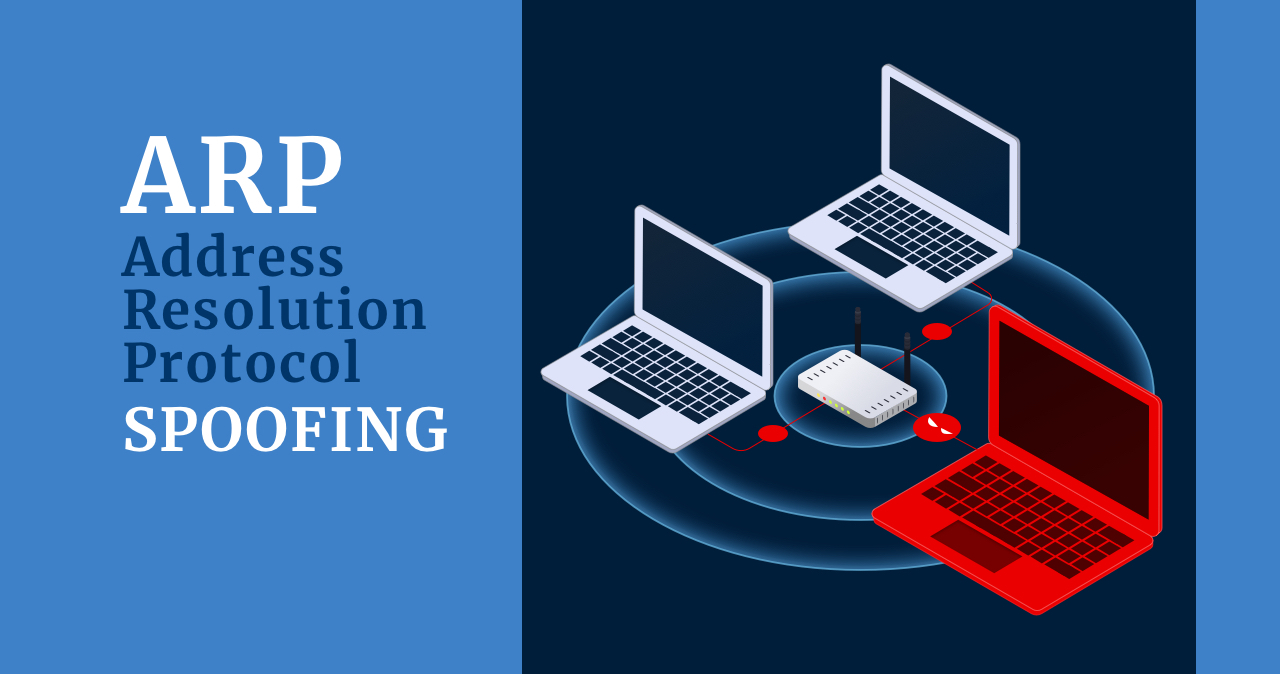ARP spoofing attacks (also known as ARP cache poisoning) remain one of the most effective yet understated network security threats in 2025. These attacks allow cybercriminals to intercept sensitive data, modify network traffic, or launch devastating denial-of-service attacks—all while remaining virtually undetected by standard security measures. With the proliferation of smart devices and IoT networks, the attack surface for ARP spoofing has expanded dramatically, making understanding this vulnerability more crucial than ever for both home users and IT professionals.
- What is ARP and Why is it Vulnerable?
- How ARP Spoofing Attacks Work: A Technical Breakdown
- Real-World ARP Spoofing Attack Examples
- ARP Spoofing Detection Methods
- Comprehensive ARP Spoofing Prevention Strategies
- ARP Spoofing Tools: Understanding the Threat Landscape
- Beyond ARP Spoofing: Related Network Attacks
- Frequently Asked Questions
What is ARP and Why is it Vulnerable?
The Address Resolution Protocol (ARP) is a fundamental networking protocol that maps IP addresses to physical MAC addresses on a local network. When a device wants to communicate with another device on the same network, it needs to know the recipient’s MAC address. It sends an ARP request asking, “Who has this IP address?” and the device with that IP responds with its MAC address.
The critical vulnerability lies in ARP’s inherent lack of authentication. The protocol was designed in the early days of networking (1982) when security was less of a concern than functionality. ARP has no mechanism to verify whether a response is legitimate or whether the responder is authorized to provide that information. This fundamental design flaw creates the perfect opportunity for attackers to exploit.
Key Vulnerability Points in ARP
- No authentication of ARP responses
- Automatic caching of ARP replies, even unsolicited ones
- Overwriting of existing cache entries with new responses
- Trust-based system with no verification mechanism
- Broadcast nature of ARP requests on local networks
How ARP Spoofing Attacks Work: A Technical Breakdown
ARP spoofing is deceptively simple in concept but potentially devastating in execution. Here’s how attackers exploit ARP’s vulnerabilities to compromise network communications:
In the attack scenario above, the process unfolds in these steps:
- Network Positioning: The attacker connects to the target’s local network (physically or through other compromised devices).
- Sending Spoofed ARP Messages: The attacker broadcasts unsolicited ARP responses claiming their MAC address is associated with legitimate IP addresses (typically the gateway/router).
- Cache Poisoning: Victim devices update their ARP cache tables with this false information, redirecting their network traffic through the attacker’s machine.
- Traffic Interception: All communications intended for the legitimate device now pass through the attacker’s system.
- Man-in-the-Middle Position: The attacker can now eavesdrop on traffic, modify data packets, or block communications entirely.
What makes this attack particularly dangerous is that it operates at the data link layer (Layer 2) of the OSI model, beneath most security controls that work at higher layers. Victims typically experience no obvious signs that their traffic is being intercepted.
Real-World ARP Spoofing Attack Examples
ARP spoofing isn’t just theoretical—it’s actively used by attackers to compromise networks and steal sensitive information. Here are documented real-world examples:
Case Study 1: The Airport VPN Breach (2023)
In late 2023, security researchers documented a sophisticated attack at a major European airport where attackers used ARP spoofing on the public WiFi network to intercept VPN credentials from business travelers. The attackers targeted specific executives from financial institutions, capturing authentication tokens that were later used to access corporate networks. The attack remained undetected for nearly three weeks and resulted in the exfiltration of approximately 2.3 TB of sensitive financial data.
Case Study 2: Hospital Network Compromise (2024)
A major US hospital network experienced a serious data breach in early 2024 when attackers used ARP spoofing to position themselves between medical devices and hospital servers. The attackers were able to capture unencrypted patient data and modify some diagnostic information, creating potential patient safety issues. The attack was only discovered when network administrators noticed unusual traffic patterns during a routine analysis.
Case Study 3: Manufacturing Facility Disruption
In 2024, a manufacturing company’s production was halted for 48 hours when attackers used ARP spoofing to compromise industrial control systems. The attackers modified communication between control systems and manufacturing equipment, causing calibration errors. The financial impact exceeded $3.7 million in lost production and remediation costs.
ARP Spoofing Detection Methods
Detecting ARP spoofing requires vigilance and specialized tools. Here are effective methods to identify potential ARP attacks in your network:
- Network Traffic Analysis: Monitor for unusual patterns like duplicate ARP responses or multiple IP addresses sharing a MAC address.
- ARP Table Monitoring Tools: Use specialized software that alerts you to unexpected changes in ARP tables.
- Packet Inspection: Analyze network traffic with tools like Wireshark to detect suspicious ARP packets.
- Intrusion Detection Systems (IDS): Deploy solutions that specifically monitor for ARP anomalies.
- MAC-IP Binding Validation: Implement tools that cross-check MAC-IP pairings against a trusted database.
# Windows Command to View Current ARP Cache
arp -a
# Sample Output (Normal)
Interface: 192.168.1.5 --- 0x4
Internet Address Physical Address Type
192.168.1.1 00-14-22-01-23-45 dynamic
192.168.1.2 00-14-22-01-23-46 dynamic
# Suspicious Pattern (Same MAC address for multiple IPs)
Interface: 192.168.1.5 --- 0x4
Internet Address Physical Address Type
192.168.1.1 00-11-22-33-44-55 dynamic
192.168.1.2 00-11-22-33-44-55 dynamic
The above command output shows a typical sign of ARP spoofing: multiple IP addresses associated with the same MAC address. While there are legitimate scenarios for this (like load balancing), it’s often a red flag, especially for critical network addresses like your default gateway.
Comprehensive ARP Spoofing Prevention Strategies
Protecting your network from ARP spoofing requires a multi-layered approach. Here are proven strategies for both home users and enterprise environments:
For Home Networks
- Use Encrypted Protocols: Ensure you’re using HTTPS, SSL/TLS, and other encrypted protocols for sensitive communications. Even if an attacker intercepts your traffic, proper encryption makes the data unusable.
- Virtual Private Networks (VPNs): Use a reputable VPN service to encrypt all your network traffic, making it much more difficult for attackers to extract useful information even if they successfully position themselves between you and your destination.
- Keep Devices Updated: Regularly update your router firmware and device operating systems to patch known vulnerabilities that might facilitate ARP spoofing attacks.
- Secure WiFi Networks: Use WPA3 encryption when available, create strong network passwords, and consider hiding your SSID to make your network a less obvious target.
- Use Packet Filtering Firewalls: Modern firewalls can help identify and block suspicious network activity, including some forms of ARP spoofing.
For Enterprise Networks
- Implement Static ARP Entries: For critical infrastructure, manually configure static ARP entries that cannot be overwritten by spoofed responses.
- Deploy Dynamic ARP Inspection (DAI): This security feature validates ARP packets by comparing them against trusted bindings from a DHCP snooping database.
- Use VLAN Segmentation: Divide your network into separate VLANs to contain potential ARP spoofing attacks to smaller network segments.
- Implement 802.1X Authentication: This standard provides port-based network access control, enhancing security by ensuring only authenticated devices can connect to your network.
- Deploy Specialized Security Tools: Use dedicated ARP spoofing detection and prevention solutions as part of your security stack.
- Regular Network Audits: Perform scheduled security assessments specifically looking for ARP table inconsistencies and other signs of manipulation.
- Employee Training: Educate staff about the risks of connecting to unsecured networks and the importance of reporting unusual network behavior.
Implementing Static ARP: A Step-by-Step Guide
For critical systems where security is paramount, implementing static ARP entries provides excellent protection against ARP spoofing. Here’s how to set it up:
- Document Your Network Devices: Create a comprehensive inventory of critical devices and their legitimate MAC-IP pairings.
- Access Command Line: Open a terminal or command prompt with administrative privileges.
- View Current ARP Table: Run
arp -ato see your current ARP cache. - Add Static Entry: Use the appropriate command for your operating system:
# Windows
arp -s 192.168.1.1 00-14-22-01-23-45
# Linux/macOS
arp -s 192.168.1.1 00:14:22:01:23:45
# Permanent entry in Linux (survives reboots)
sudo nano /etc/ethers
# Add line: 00:14:22:01:23:45 192.168.1.1
# Then run: sudo service networking restart
- Verify the Entry: Run
arp -aagain to confirm your static entry appears with type “static” rather than “dynamic”. - Test Network Connectivity: Ensure devices can still communicate properly after implementing static entries.
- Script for Multiple Entries: For environments with many devices, create a batch script or shell script to automate the process.
ARP Spoofing Tools: Understanding the Threat Landscape
Understanding the tools attackers use can help you better protect your network. These are some common tools used for ARP spoofing attacks (knowledge of these tools is for defensive purposes only):
| Tool Name | Primary Features | Detection Signatures |
|---|---|---|
| Arpspoof (part of dsniff) | Redirects packets from a target host by forging ARP replies | Unusual ARP traffic volume, multiple replies to unasked requests |
| Ettercap | Comprehensive MITM framework with ARP poisoning capabilities | Duplicate MAC addresses in logs, unusual broadcast traffic |
| Bettercap | Modern network attack framework with enhanced ARP spoofing features | Multiple MAC address changes, gateway IP address changes |
| MITMf | Framework focusing on man-in-the-middle attacks via ARP spoofing | High frequency of gratuitous ARP packets, unusual DNS queries |
| Wireshark | While primarily for analysis, can be used to identify ARP vulnerabilities | N/A (legitimate security tool but can identify spoofing attempts) |
Security teams should familiarize themselves with these tools’ signatures to better detect potential attacks. Many modern security solutions specifically look for patterns associated with these tools’ operation.
Beyond ARP Spoofing: Related Network Attacks
ARP spoofing is just one technique in the broader category of network-based attacks. Understanding related attacks provides context and helps develop a more comprehensive security strategy:
- Man-in-the-Middle (MITM) Attacks: ARP spoofing is often used to facilitate MITM attacks, where attackers position themselves between two communicating parties.
- DNS Spoofing: Similar to ARP spoofing but targets the Domain Name System to redirect users to malicious websites.
- MAC Flooding: Overwhelms switch MAC address tables, potentially forcing the switch to act like a hub and broadcast all traffic to all ports.
- DHCP Spoofing: Attackers set up rogue DHCP servers to distribute malicious network configuration information.
- IP Spoofing: Involves creating IP packets with a forged source IP address to impersonate another system.
Many of the protective measures for ARP spoofing also help defend against these related attacks, emphasizing the importance of a layered security approach.
Frequently Asked Questions
Can ARP spoofing attacks affect wireless networks?
Yes, wireless networks are actually more vulnerable to ARP spoofing than wired networks. Since wireless communications are broadcast by nature, attackers within range can more easily capture and monitor network traffic. Additionally, public WiFi networks are particularly susceptible because they often lack the security controls found in corporate environments. When using public WiFi, always use a VPN and avoid accessing sensitive information.
Is ARP spoofing illegal?
Yes, in most jurisdictions, ARP spoofing with malicious intent is illegal under computer fraud and abuse laws. It’s considered a form of network intrusion or unauthorized access. However, the technique itself is sometimes used legitimately by network administrators for network management, troubleshooting, or during authorized penetration testing. The legality depends on context, authorization, and intent.
Can VPNs protect against ARP spoofing?
VPNs provide significant protection against the consequences of ARP spoofing but don’t prevent the spoofing itself. When you use a VPN, your network traffic is encrypted before it leaves your device. This means that even if an attacker successfully redirects your traffic via ARP spoofing, they cannot read the encrypted contents. However, they might still be able to analyze metadata or attempt more sophisticated attacks against the VPN connection itself.
How can I tell if I’m currently being targeted by an ARP spoofing attack?
Signs that you might be experiencing an ARP spoofing attack include unexpected network slowdowns, intermittent connection issues, unusual network behavior (like being redirected to wrong websites), or duplicate IP address warnings. To check more definitively, you can examine your ARP cache (using “arp -a” command) and look for multiple IP addresses mapped to the same MAC address, especially if your default gateway’s MAC address has changed. Specialized security tools can provide more reliable detection.
Are modern networks still vulnerable to ARP spoofing?
Yes, despite being a decades-old technique, ARP spoofing remains effective against many modern networks. The fundamental vulnerability exists because the ARP protocol itself hasn’t changed—it still lacks authentication mechanisms. While enterprise environments often implement protections like Dynamic ARP Inspection, many home networks, small businesses, and public WiFi hotspots remain vulnerable. The ongoing effectiveness of ARP spoofing explains why it continues to be a common attack vector in 2025.
Protect Your Network Against All Threats
ARP spoofing is just one of many network-based threats that can compromise your security. For comprehensive protection against a wide range of cyber threats, consider these additional resources:
- Learn how to detect and prevent man-in-the-middle attacks
- Understand the risks of various spoofing techniques used by cybercriminals
For advanced threat protection, GridinSoft offers comprehensive security solutions that safeguard your digital life from various attack vectors.





